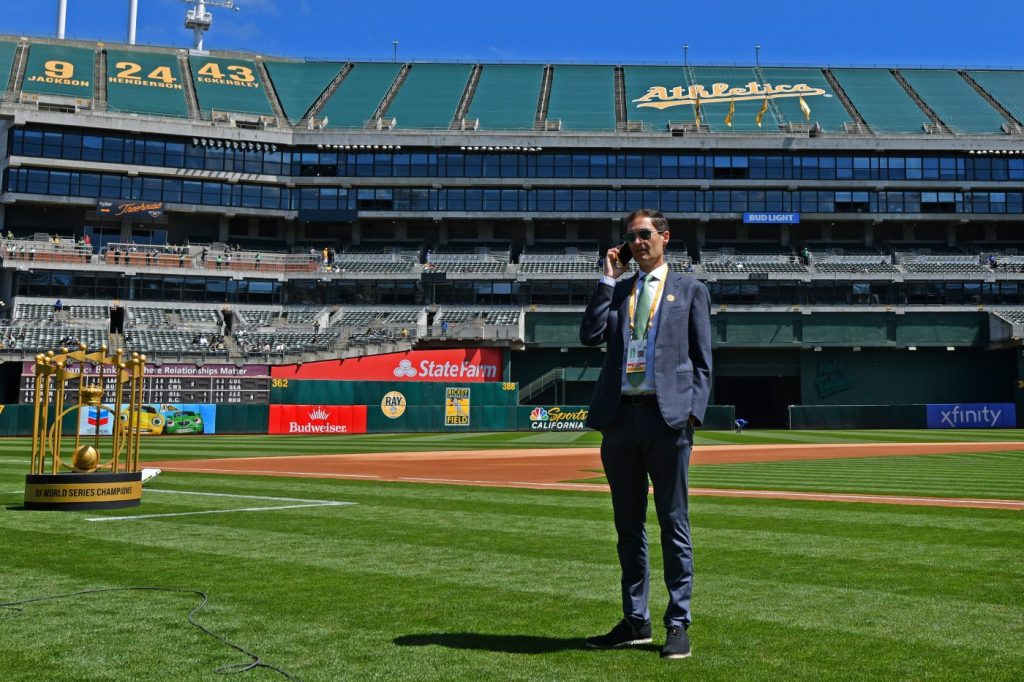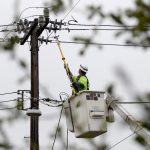As the Oakland A’s bargain for a short-term lease extension at the Coliseum, the city’s mayor insists that the team, before departing for Las Vegas, leaves behind its name and a promise of a future expansion team here.
It’s not going to happen. And it’s the wrong play.
Mayor Sheng Thao and county officials should keep their eye on the ball and stop swinging for the fences. In what should be the final inning of the great ballpark saga, city and county representatives negotiating with the team have an opportunity to regain control over the Coliseum property.
The 112-acre parcel, one of the Bay Area’s most important development sites, has stellar transportation access, including an interstate freeway on one side, a BART station and Capitol Corridor train stop on the other, and an international airport just three miles away.
City and county officials have a chance to enable economic revitalization, bringing needed housing, commercial development and a refurbished sports complex to an impoverished Oakland neighborhood.
They don’t need a home run. They just need a strategically placed hit that drives in the winning run and redeems county supervisors from the huge error they made five years ago when they gave up site control.
To recap how we got to this point, look back to 2019 when Alameda County, which co-owns the Coliseum property with the city, agreed to sell its half to the A’s.
The deal was purportedly aimed at helping the team stay in the East Bay. That was back in the days when the A’s claimed they were “rooted in Oakland.”
Profits from future development of the Coliseum site were to be used by the team to subsidize their plans to build a ballpark six miles up Interstate 880 at Howard Terminal, adjacent to Jack London Square.
County supervisors got rolled in the deal. They sold the county’s half-interest at a sweetheart price and never bothered to require that the team stay in the city as a condition of the sale.
The deal, scheduled to close in 2026, will leave the city unable to develop the site without the A’s cooperation. And, as we saw with the collapse of the development plans for Howard Terminal, the A’s, and in particular team President Dave Kaval, can be impossible to negotiate with.
But now the tables are turned. The A’s are no longer rooted here, but they need the Coliseum site for games until their Las Vegas ballpark is completed, in 2028, if they’re lucky. The team has a lease at the Coliseum only through the end of this year.
To play at the Coliseum in 2025, the A’s need the county’s and city’s OK. And, from 2026 on, they will still need the support of the city.
If Thao insists on keeping the team name and logo in Oakland and securing the promise of an expansion team, she’s likely to walk away with nothing. MLB owners aren’t about to talk about expansion teams now, and they certainly won’t move Oakland to the front of the line.
But Oakland does have leverage on the issue of controlling the Coliseum. As I’ve previously explained, the city has the power to acquire the A’s portion through eminent domain, and it has a deal with a business group that has signaled its willingness to cover the cost.
The A’s, in turn, know they need a place to play for a few years, and they reportedly could lose lucrative TV contracts if it’s not in the Bay Area. That helps explain why they have suddenly started talking with the city-backed consortium, the African-American Sports and Entertainment Group, about a sale of the team’s half interest in the Coliseum.
Whether team officials will bargain in good faith remains to be seen. They don’t have a good track record.
Meanwhile, city and county officials must stay focused. Demanding the team name and logo and rights to an expansion team might feel good to Thao and die-hard fans. But it won’t bring needed economic development to one of Oakland’s poorest neighborhoods.
Victory is possible here. But only if city and county officials play strategically.


